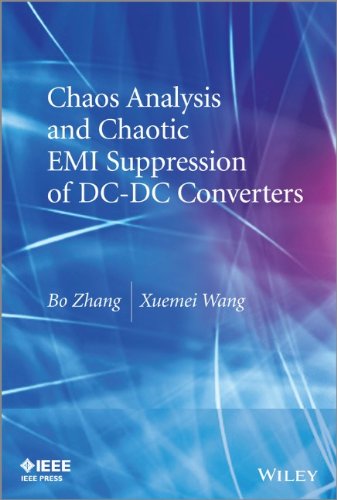

Most ebook files are in PDF format, so you can easily read them using various software such as Foxit Reader or directly on the Google Chrome browser.
Some ebook files are released by publishers in other formats such as .awz, .mobi, .epub, .fb2, etc. You may need to install specific software to read these formats on mobile/PC, such as Calibre.
Please read the tutorial at this link: https://ebookbell.com/faq
We offer FREE conversion to the popular formats you request; however, this may take some time. Therefore, right after payment, please email us, and we will try to provide the service as quickly as possible.
For some exceptional file formats or broken links (if any), please refrain from opening any disputes. Instead, email us first, and we will try to assist within a maximum of 6 hours.
EbookBell Team

4.7
106 reviewsIntroduces chaos theory, its analytical methods and the means to apply chaos to the switching power supply design
DC-DC converters are typical switching systems which have plenty of nonlinear behaviors, such as bifurcation and chaos. The nonlinear behaviors of DC-DC converters have been studied heavily over the past 20 years, yet researchers are still unsure of the practical application of bifurcations and chaos in switching converters. The electromagnetic interference (EMI), which resulted from the high rates of changes of voltage and current, has become a major design criterion in DC-DC converters due to wide applications of various electronic devices in industry and daily life, and the question of how to reduce the annoying, harmful EMI has attracted much research interest. This book focuses on the analysis and application of chaos to reduce harmful EMI of DC-DC converters.
After a review of the fundamentals of chaos behaviors of DC-DC converters, the authors present some recent findings such as Symbolic Entropy, Complexity and Chaos Point Process, to analyze the characters of chaotic DC-DC converters. Using these methods, the statistic characters of chaotic DC-DC converters are extracted and the foundations for the following researches of chaotic EMI suppression are reinforced. The focus then transfers to estimating the power spectral density of chaotic PWM converters behind an introduction of basic principles of spectrum analysis and chaotic PWM technique. Invariant Density, and Prony and Wavelet analysis methods are suggested for estimating the power spectral density of chaotic PWM converters. Finally, some design-oriented applications provide a good example of applying chaos theory in engineering practice, and illustrate the effectiveness on suppressing EMI of the proposed chaotic PWM.